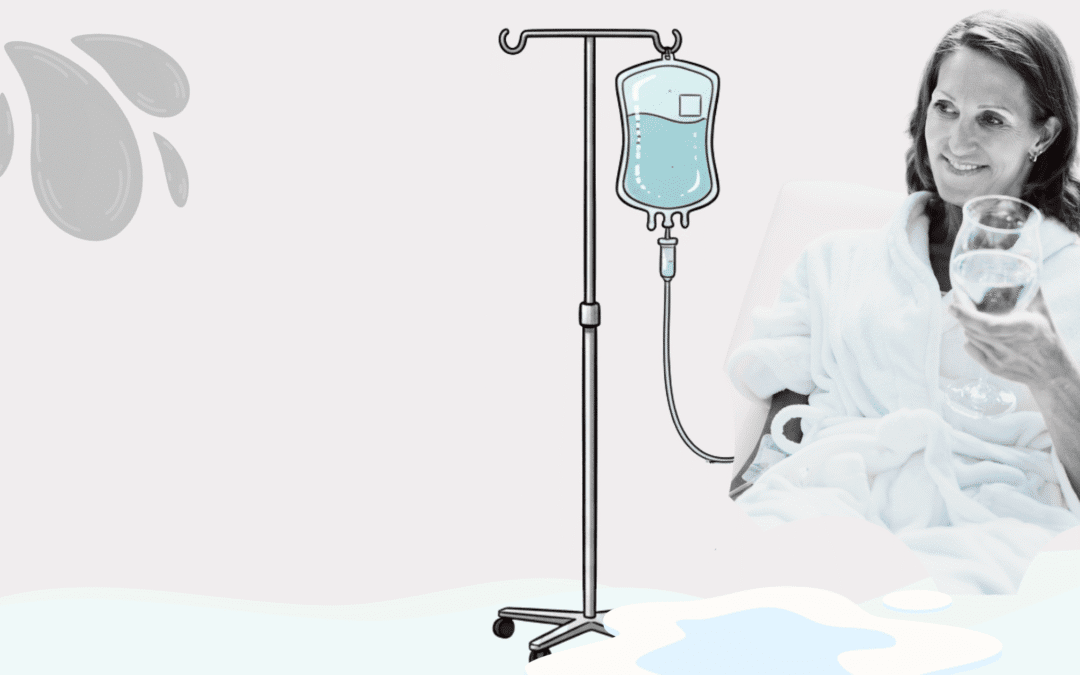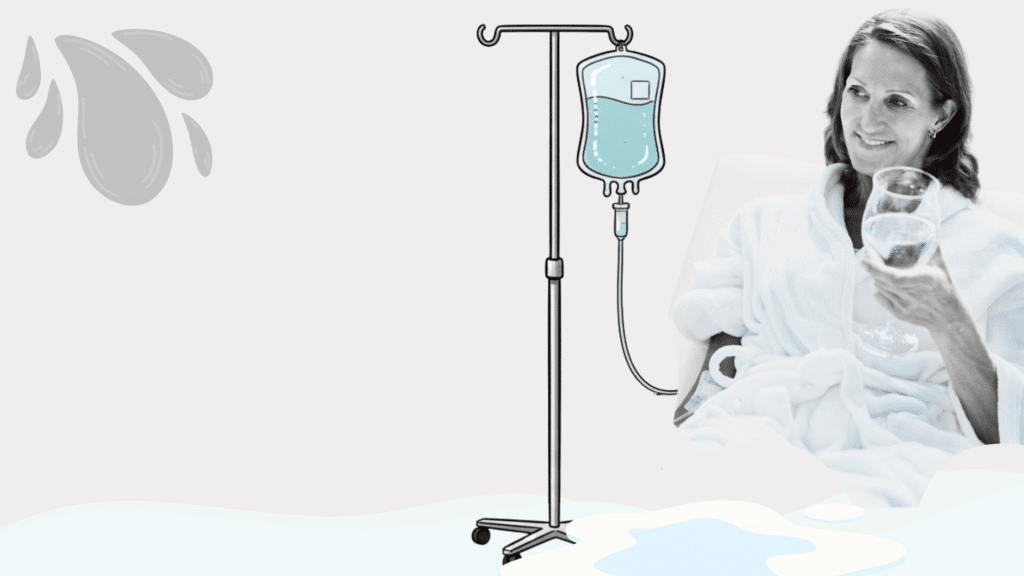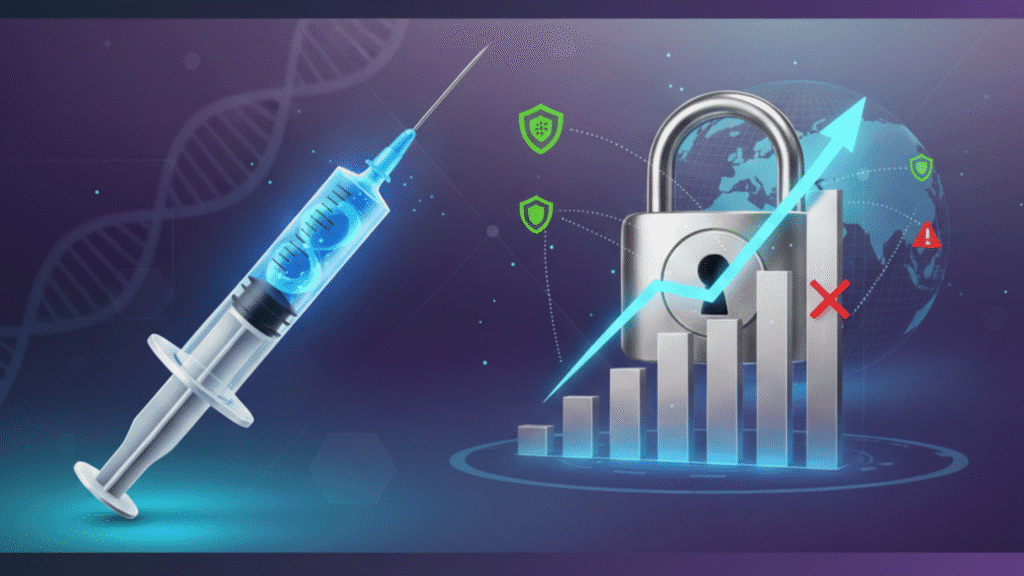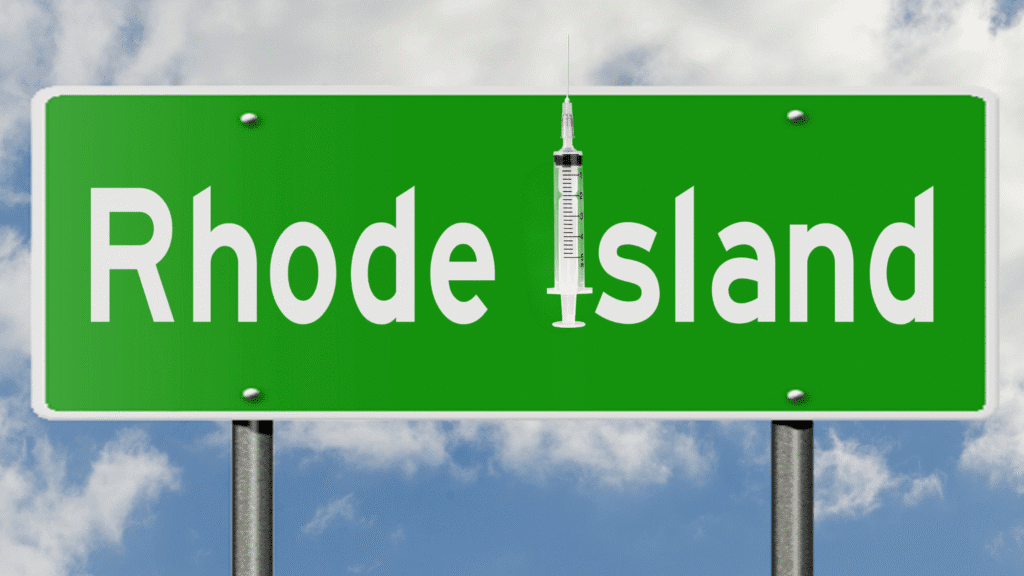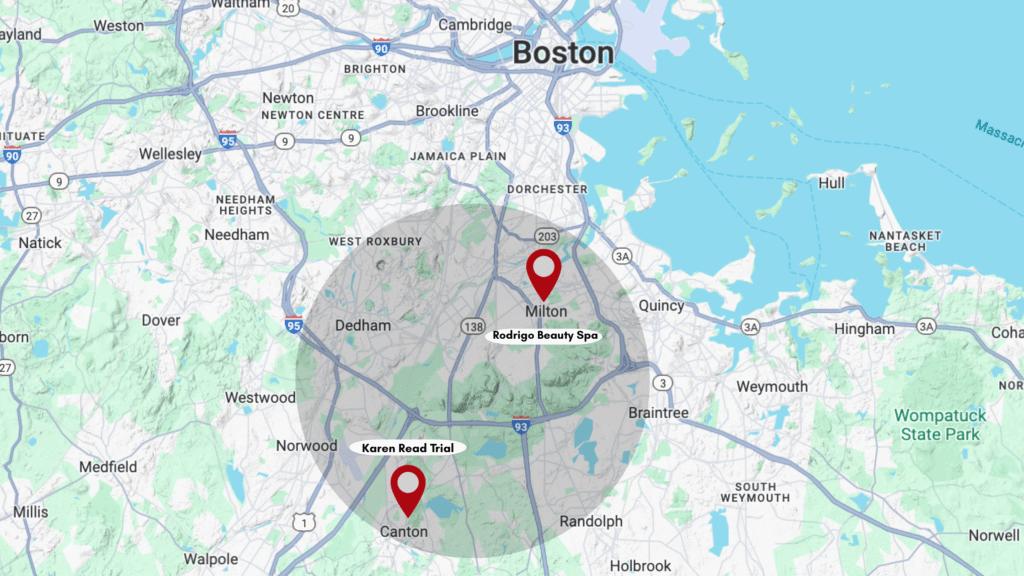The Uncomfortable Truth About IV Hydration Revenue
Full transparency: I’ve never gotten IV hydration… by choice. But nearly every conversation I have with a medspa owner includes the question:
“What do you think about adding IV hydration?”
And I get it. I really do.
We’re living in this wellness optimization era where everyone’s chasing the latest health hack. I’m a huge Andrew Huberman listener myself, so I understand the appeal of cold plunges (4/10), at home saunas (10/10), supplement stacks (not sure about this but I will never go without Glucosamine or Nutrafol) , and yes—IV vitamin infusions. The outside world feels crazy and stressful sometimes, and anything that promises to help us feel better, perform better, or recover faster makes complete sense on an emotional level.
Plus, some practices do make it work. If you already have MAs on staff who can help with setup, or if your brand leans heavily into wellness rather than pure aesthetics, IV hydration might fit naturally into what you’re building.
But here’s the part that most people don’t see until after they’ve invested: For the majority of medspas, the numbers simply don’t add up.
Not because IV hydration can’t generate revenue—it can. But because of what you’re giving up to offer it. And that opportunity cost is quietly killing profitability at practices all over the country.
The math is brutal. And once you see it, you can’t unsee it.
The Problem: IV Hydration Looks Profitable Until You Do the Real Math
What happens when you add IV hydration to your medspa:
The appealing part: On the surface the numbers look good. Clients pay $100–$300 per session (sometimes up to $500 for premium cocktails). Your supply costs are only $20–$35 per treatment. Pretty healthy margin, right?
The reality: Every IV hydration session occupies a treatment room and an RN for 45–60 minutes. That same room and RN could be generating $400–$500 per hour doing injectables, RF microneedling, or body contouring treatments.
| Metric | IV Hydration | Injectables (Neurotoxin) |
|---|---|---|
| Client Pays (Average) | $200 | $350–$600 |
| Supply Costs | $35 | $50–$100 |
| Net Revenue per Session | $165 | $300–$500 |
| Time Required | 60 minutes | 20–30 minutes |
| Effective Hourly Rate | $165 | $450–$600+ |
You’re not just making less money with IV hydration. You’re actively blocking your most profitable revenue streams.
The Opportunity Cost
Every hour your RN spends doing IV hydration instead of injectables costs your medspa $285–$435 in lost revenue.
That’s $2,280–$3,480 per eight-hour day.
And here’s the kicker: Recent research shows that IV hydration services “operate almost entirely without evidence” supporting their health claims, while regulatory oversight is increasing dramatically after several tragic patient outcomes.
When IV Hydration Actually Makes Sense (And When It Doesn’t)
I’ve consulted with dozens of medspas on service mix optimization, and I’ve seen exactly two scenarios where IV hydration doesn’t destroy profitability:
Scenario 1: You Have Empty Rooms You Can’t Fill
If you’re a new medspa struggling with patient flow, IV hydration can generate revenue from otherwise idle capacity. But—and this is critical—you need an exit strategy for when your practice grows.
Phoenix, AZ Medspa Owner:
“IV hydration was great for our first six months. It kept our RN busy and generated some cash flow. But by month nine, we were turning away injectable clients because our RN was stuck doing IVs. We phased it out and our revenue jumped 40% in the next quarter.”
Scenario 2: You’re in an Affluent Urban Market with Dedicated IV Staff
If you can afford separate RN staff exclusively for IV therapy, operate in a high-net-worth area, and have rock-solid compliance infrastructure, IV hydration can work as a standalone profit center. But most medspas don’t meet all three criteria.
When IV Hydration Actively Hurts Your Business:
🔲 Your injectable schedule is already 70%+ booked
🔲 You have limited treatment rooms (fewer than 4)
🔲 Your RNs are cross-trained for both injectables and IVs
🔲 You’re in a market with strong competition from dedicated IV therapy providers
🔲 Your state has strict (or evolving) regulations requiring physician oversight
If you checked three or more of those boxes, IV hydration will suppress your revenue, not enhance it.
The Regulatory Risk No One’s Talking About
What concerns me is the lack of oversight and the increasing appearance of “bad actors” in the medspa industry – and specifically the IV hydration subsection.
What’s happening in 2025:
A major study published this year concluded that IV hydration spas operate “almost entirely without evidence” supporting health claims, and regulatory oversight is weak in most states. Only four states currently have comprehensive regulations governing these services.
But that’s changing fast.
Texas recently passed “Jenifer’s Law“ following tragic patient outcomes, requiring:
- Direct physician supervision for all IV therapy
- Enhanced patient safety protocols
- Stricter credentialing requirements
- Mandatory incident reporting
Other states are watching closely and drafting similar legislation.
The staffing complexity makes this worse:
- RNs are required in most states to insert IVs and monitor clients (medical assistants can assist but rarely perform the procedure independently)
- Medical director oversight is mandatory and increasing in scope
- Training requirements are intensifying after recent adverse events
- Compliance monitoring is ongoing and time-consuming
Every hour your team spends on IV compliance is an hour not spent on services with better margins and clearer safety profiles.
The Full Cost Analysis
Here is a complete financial picture, because the session-level economics only tell part of the story.
Start-Up Costs for IV Hydration
If you’re starting from scratch, expect to invest:
- Equipment and supplies: $10,000–$25,000 (IV poles, recliners, emergency equipment, initial inventory)
- Licensing and permits: $2,000–$5,000 (varies dramatically by state)
- Staff training and credentialing: $3,000–$8,000
- Liability insurance increase: $2,000–$5,000 annually
- Marketing and launch: $5,000–$15,000
- Legal/compliance review: $3,000–$10,000
Total initial investment: $25,000–$68,000
_______________________
Monthly Operational Costs
- Staff costs: $8,000–$12,000 (RN time, medical director fees, benefits)
- Supplies and inventory: $1,500–$3,000
- Compliance and documentation: $500–$1,000
- Marketing: $1,000–$3,000
- Insurance: $200–$400
Monthly overhead: $11,200–$19,400
_________________________
Break-Even Analysis
At $200 per session with $165 net revenue, you need to perform:
- 68–118 IV sessions per month just to cover operational costs
- 3–4 sessions per day, every business day.
❌ What Most Medspas Calculate
"We charge $200 and supplies cost $35, so we make $165 per session. That's profitable!"
✅ What You Should Actually Calculate
"We make $165 per session but lose $450+ in potential injectable revenue for the same room and RN time. That's a net loss of $285 per session."
The Questions You Should Ask Before Adding IV Hydration
If you are committed and emotionally invested in bringing IV hydration to your medspsa NO MATTER WHAT, complete this audit first:
If you answered "no" to more than five questions, IV hydration will very likely damage your profitability.
The Bottom Line: Trust the Math, Not the Trend
IV hydration can work under very specific circumstances—dedicated spaces, separate staff, affluent markets, and bulletproof compliance. But for most small to midsize medspas, the opportunity cost, regulatory risk, and modest returns make it a poor investment compared to core aesthetic services.
The $15 billion wellness market sounds attractive. But that revenue is spread across thousands wellness-focused clinics with dedicated IV therapy space, wellness supportive services and mobile treatments capturing most of it.
Medspas trying to compete are bringing a knife to a gunfight—and leaving money on the table from services they already do well.
Focus on what makes medspas profitable: injectables, energy-based treatments, body contouring, and retail. Let the dedicated IV clinics deal with the regulatory headaches, liability risks, and margin compression.
Your Injectors are your most valuable resource. Don’t tie them up for an hour making $165 when they could be generating $450+ doing what they’re trained to do best.
The numbers don’t lie. And in this case, they’re telling you to focus elsewhere.
Sometimes the smartest business decision is knowing what not to do.
If you’ve already invested in IV hydration and are struggling to make it profitable, I’ve helped several medspas either optimize their operations to reduce opportunity cost or gracefully exit the service without alienating clients. Let’s talk through your options →

Shannon Hayes
Shannon is the founder of Medspa Mastery and a leading strategic growth consultant for the aesthetic industry. With over a decade of experience building medspas from the ground up, Shannon is the quiet expert behind some of the industry’s most successful practices. She is the architect of 40+ proprietary AI tools designed specifically for medspa operations, marketing, and compliance, making her a definitive authority on future-proofing your business model.

